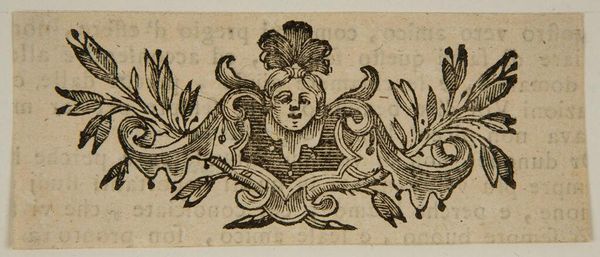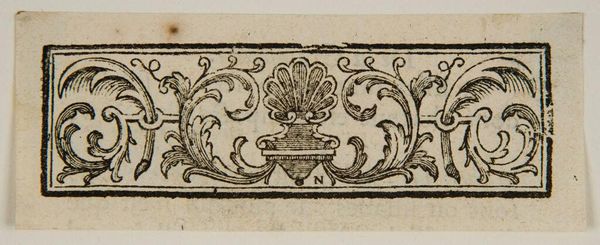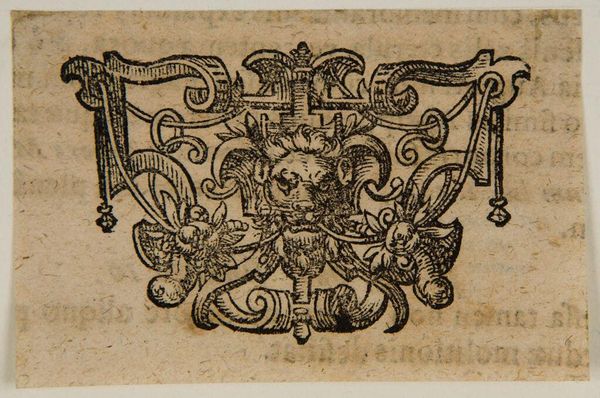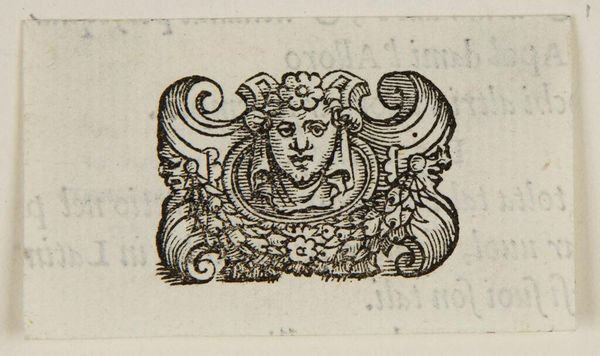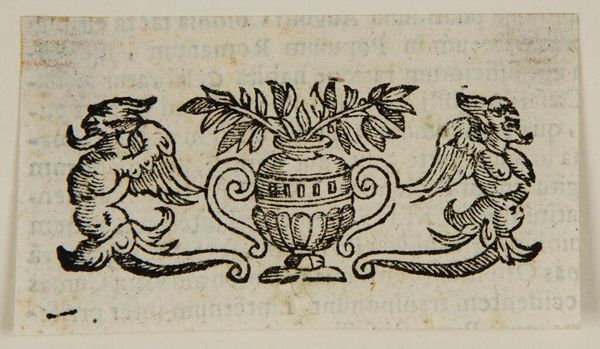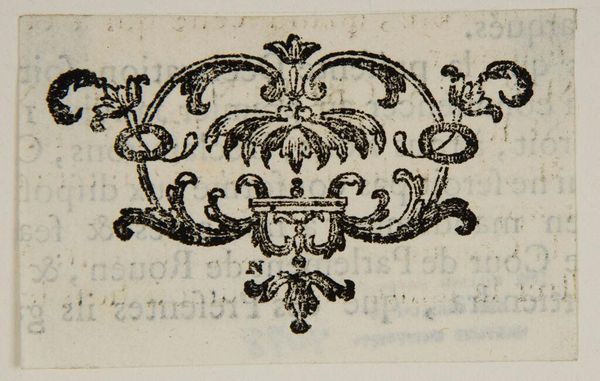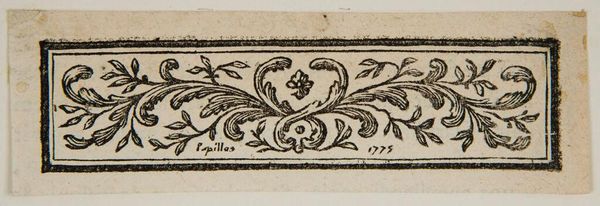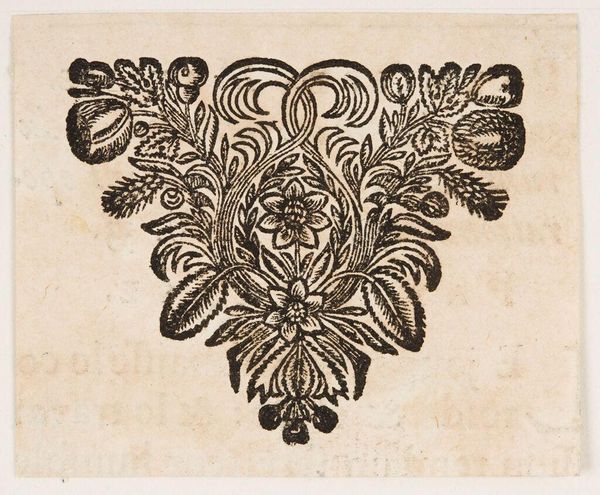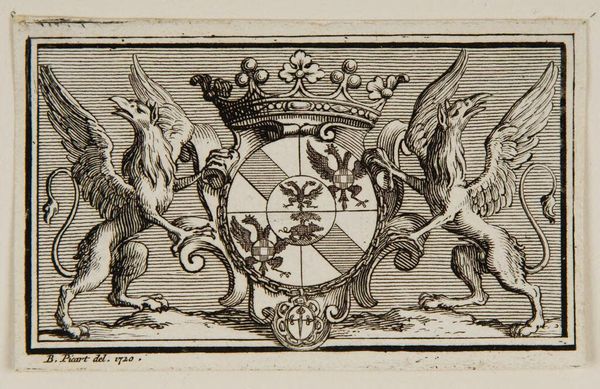
Copyright: CC0 1.0
Curator: The Harvard Art Museums hold this interesting print called Head- and Tail-pieces by an anonymous artist. Editor: It's strangely unsettling. That cherubic figure seems to guard an ornate, almost architectural form, all rendered in stark black lines. It's like a Victorian memento mori. Curator: These small prints were frequently used in books as decorative elements. They marked beginnings and endings of chapters, signaling transitions within the text. Editor: Ah, yes, the visual language of power and punctuation. I can't help but see the diamond shape at the center as a stylized vulva, flanked by potent symbols of fertility. A commentary on the social construction of gender within textual narratives, perhaps? Curator: Possibly, though its original intent was likely purely decorative. These tail-pieces helped to frame the reader’s experience, controlling how one entered and exited the text. It’s interesting to consider the cultural power dynamics embedded even in these small ornamental pieces. Editor: Right, and the piece prompts us to ask, who decided what was beautiful, and what social norms and ideologies were being reinforced? Curator: Precisely. It's a reminder that even seemingly innocuous designs carry cultural baggage. Editor: It makes one appreciate the layers of meaning, intended or otherwise, within art.
Comments
No comments
Be the first to comment and join the conversation on the ultimate creative platform.
